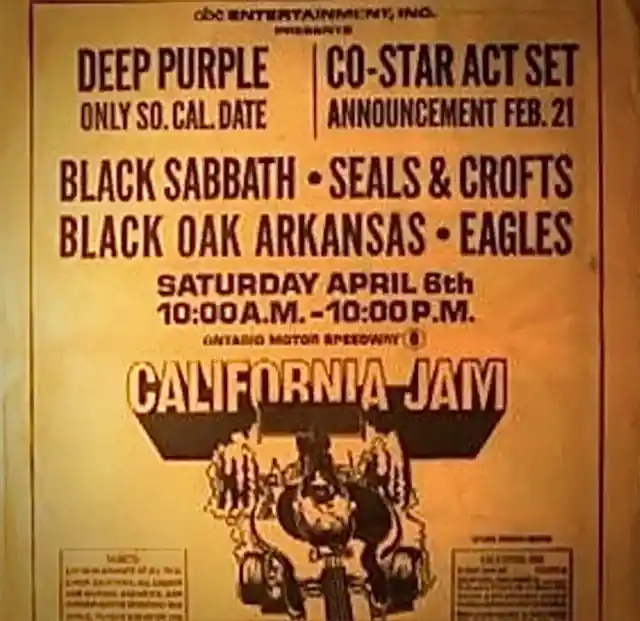Setting The Right Tone
The late 1960s to the mid-1970s was an era marked in part by music festivals that saw many high notes: Monterey Pop (1968), Isle of Wright (1968), and Woodstock (1969). It’s an understatement to say that there was an abundance of peace, love, and peace-loving people at these events; they drew music lovers by the hundreds of thousands (the Woodstock festival alone attracted an audience of more than 400,000). In 1974, California hosted the last of the giant music festivals, California Jam, and sold more than 200,000 tickets. Today, Coachella headlines the major California music festivals that draw tens of thousands from all over the country, but California Jam makes Coachella look comparatively small.


California Jam wasn’t the first music festival to attract hundreds of thousands of people eager to tune in and turn on, but it was the first concert of its scope and size to do so efficiently, safely, and—in a departure from other large-scale festivals—profitably. David Shaw of the Los Angeles Times noted, “Even from a vantage point 40 feet above the stage, the sea of humanity stretched as far as the eye could see. With temperatures hovering near 85, bikinis, shorts, and bare chests were plentiful, and the scene at times looked more like a Sunday afternoon at the beach than a rock festival.”
Fortunately, California Jam didn’t see much of the looting, dysentery, and overall chaos that characterized the Woodstock festival. A team of 700 security guards set an orderly tone and stopped the majority of California Jam attendees from getting into the show for free. Nearly all of the music lovers who flocked to Ontario, California paid $10 to see a star-studded lineup perform all in one setting.
Festival headliners included The Eagles; Black Sabbath; Earth, Wind, and Fire; Black Oak Arkansas; Seals & Crofts; Deep Purple; Jackson Browne; and Emerson, Lake & Palmer. Some of the bands were flown in by helicopter. The organizers set up two stages to allow for performances in quick succession: While The Eagles jammed on one stage, the second stage was being prepped for the next act. Band members stayed at a Holiday Inn that organizers draped with a sign reading, “Welcome Western States Police Officers Assn” in an attempt to discourage concertgoers from loitering at the hotel. Concert highlights were aired on the ABC network over four nights.
One area in which organizers failed to plan was parking. The concert’s massive 42,000-car parking lot was filled to capacity in just a matter of minutes, backing up traffic—in both directions—on Interstates 10 and 60 for thirteen miles. Some concert attendees decided to park their cars along the I-10 freeway and then make the rest of the journey on foot. Many of the left-behind cars were ticketed or towed away.
Seeing Is Believing
To close out the historic concert, Keith Emerson and his piano began levitating and spinning while he continued singing. The unexpected—and seemingly unexplainable—magic act blew at least one man’s mind as he wrote, “I had to turn to my friend to ask to make sure he was seeing the same thing. Considering the day’s acid consumption, it was entirely possible that I was just seeing things. Once the piano started doing somersaults with him riding it like a carnival ride, my mind was blown. Now I’ve seen it all.”